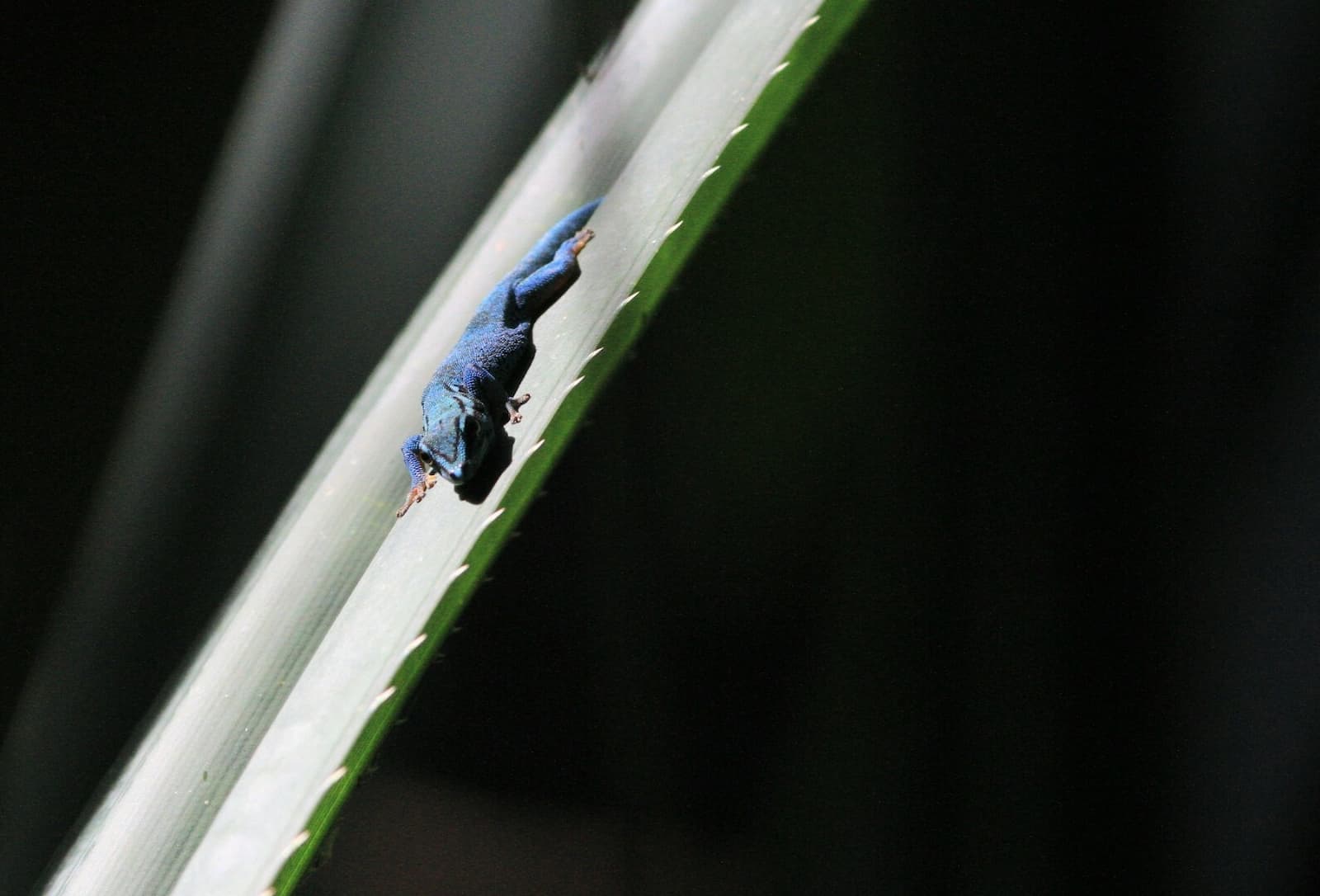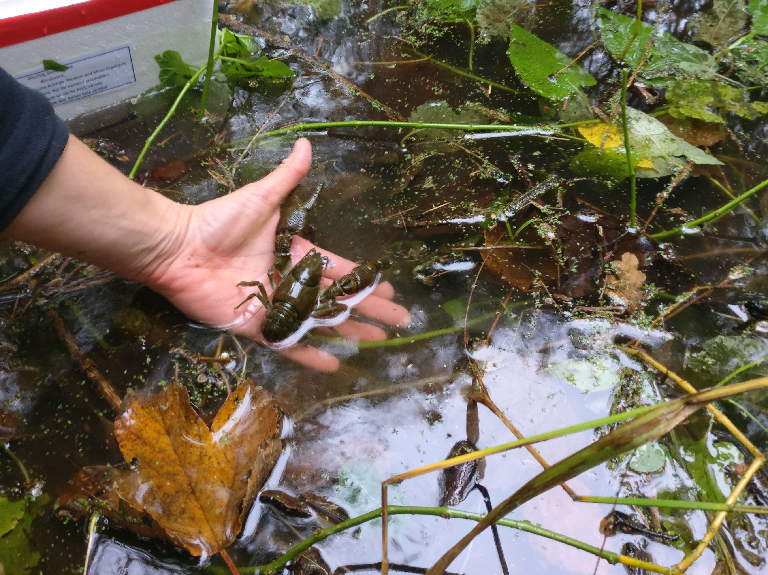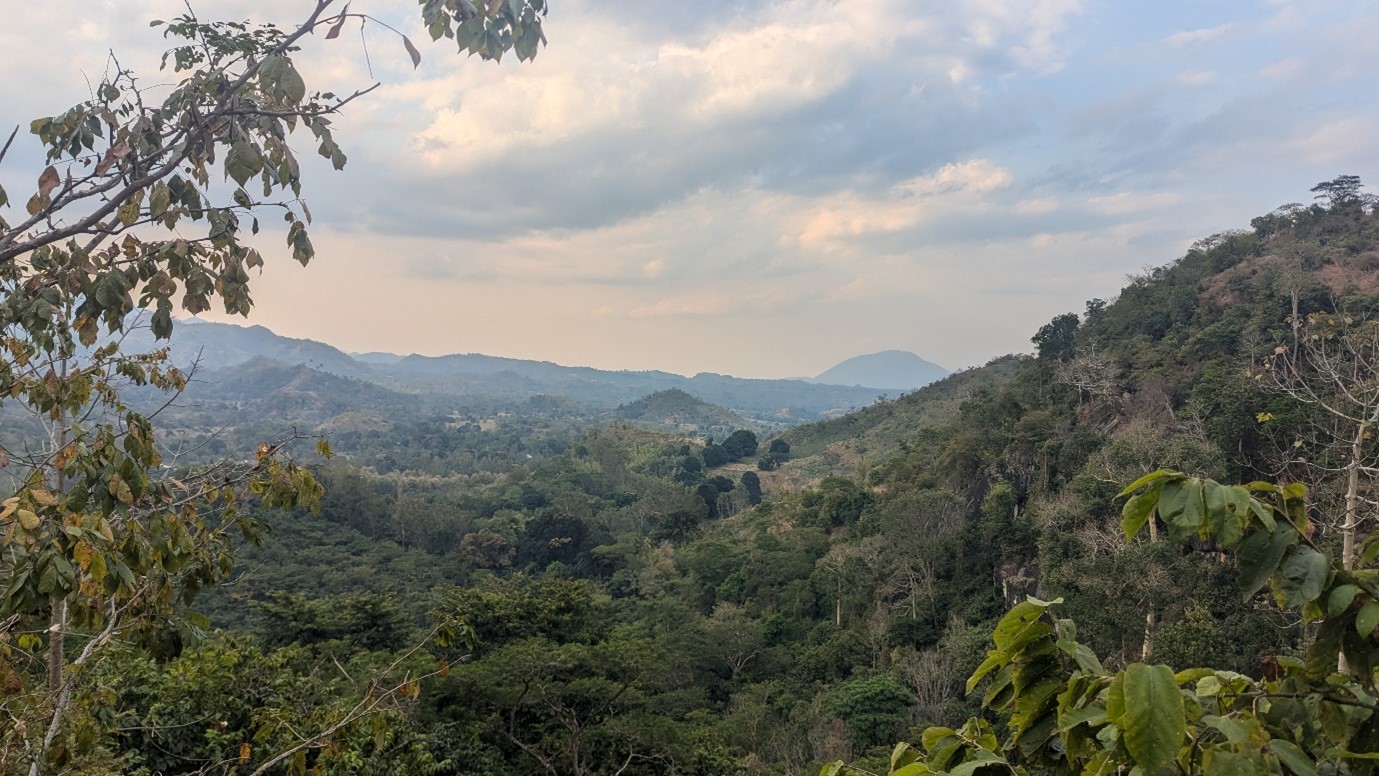A journey through our conservation projects: part three
Posted on: 9 September, 2025
On the journey through our conservation projects so far, we have explored our work in Equatorial Guinea, Madagascar, the Philippines, and Cameroon. In this final instalment, we’ll continue to explore the species that we are working to protect through our worldwide conservation projects.
Our fantastic team of experts here at Bristol Zoological Society direct 20 field conservation projects across nine countries, inspire future conservationists through further education programmes and play a huge part in redefining what a zoo should be in the 21st century at Bristol Zoo Project. As we work to unite conservation fieldwork, research, conservation breeding programmes, education and visitor experience, we are on a mission to save threatened species all over the world, as well as protect wildlife through developments at Bristol Zoo Project.
Critically Endangered turquoise dwarf gecko in Tanzania
 Numbers in the wild are decreasing rapidly for our next species, the Critically Endangered turquoise dwarf gecko, a tiny yet charismatic species of lizard found in the Kimboza Forest Reserve in Tanzania, East Africa.
Numbers in the wild are decreasing rapidly for our next species, the Critically Endangered turquoise dwarf gecko, a tiny yet charismatic species of lizard found in the Kimboza Forest Reserve in Tanzania, East Africa.
This species is characterised by a distinct sexual dichromatism, the occurrence of two different kinds of colouring, males have a bright and vibrant turquoise blue body, while females are green-bronze. This dynamic colouration, coupled with its overall charismatic appearance, drove an increasing demand from the pet trade, with at least 15% of the population having been collected from the wild between 2005 and 2009. This, combined with other factors such as habitat loss, fires and invasive species, it is now thought that there are only 150,000 left in the wild, contained within a very small restricted area, of less than 8 km2, roughly a 10th of the size of Bristol, within the Kimboza Forest Reserve.
Bristol Zoological Society has partnered with local conservationists in Tanzania at the Sokoine University of Agriculture (SUA), in assisting with reforestation efforts to protect the gecko's forest home. This includes the native tree species, screwpine pandanus rabaiensis, on which the geckos are primarily reliant for their survival. We have supported the raising and planting out of over 5,000 seedlings of an array of native tree species into degraded areas of the reserve. Additionally, we have also been exploring the implementation of new and innovative techniques, such as environmental DNA (eDNA) monitoring, to track gecko populations as their habitat is restored.
Outside of Tanzania, back here in the UK, we have also been working to support turquoise dwarf geckos. In 2015, a shipment of 165 geckos, which were being illegally imported, was seized at Bristol Airport and taken into care here at Bristol Zoological Society. Since then, we have been breeding the species, as part of a conservation breeding programme overseen by EAZA (European Association of Zoos and Aquaria), and we work with zoos across Europe to save the species. This vital work ensures that the species has a viable insurance population in captivity, which can then be released back into the wild if needed.
Endangered white-clawed crayfish in the UK
 For over 15 years, Bristol Zoological Society has been working to protect the white-clawed crayfish, a seemingly insignificant invertebrate that is threatened due to habitat loss, pollution, fragmentation and the invasive non-native North American signal crayfish.
For over 15 years, Bristol Zoological Society has been working to protect the white-clawed crayfish, a seemingly insignificant invertebrate that is threatened due to habitat loss, pollution, fragmentation and the invasive non-native North American signal crayfish.
Endangered white-clawed crayfish are known as ecosystem engineers, maintaining waterways by foraging for invertebrates, water plants and dead matter, keeping the aquatic environment clean for other species to thrive. The Society plays a major role in the protection of the species, including caring for captive-born populations at our hatchery in Bristol and releasing them into the wild. Since the project began in 2008, in partnership with the South West Crayfish Partnership (SWCP), the team have released more than 3,000 captive-born white-clawed crayfish into the wild into carefully chosen sites free from the American signal crayfish. The project has also established 22 safe ark sites in the South West for both wild-caught and captive-born white-clawed crayfish, run outreach programmes to raise awareness of this endangered species, encouraged biosecurity to stop the spread of non-native invasive species, and conducted a pilot trial for invasive crayfish control.
Bristol Zoo Project
 As part of our plans to transform our Bristol Zoo Project site, we will create a new Conservation Campus, which will include conservation, veterinary medicine, animal breeding and learning centres so we can expand our existing institute programmes. Currently run by 15 active conservationists, which is one of the biggest of any zoo in the UK, the team lecture in partnership with all of the universities across Bristol, the University of Bristol, UWE, and South Glos and have a huge impact of the future of conservation and inspiring future projects and individuals.
As part of our plans to transform our Bristol Zoo Project site, we will create a new Conservation Campus, which will include conservation, veterinary medicine, animal breeding and learning centres so we can expand our existing institute programmes. Currently run by 15 active conservationists, which is one of the biggest of any zoo in the UK, the team lecture in partnership with all of the universities across Bristol, the University of Bristol, UWE, and South Glos and have a huge impact of the future of conservation and inspiring future projects and individuals.
Our new Conservation Campus will become a new education and skills hub for the region, with 20 new learning spaces and provide teaching facilities for more than 600 students each year participating in our higher education programmes, as well as help us to engage 90,000 school children a year. Visitors will be able to watch veterinary procedures, see animals that are extinct in the wild and being bred for reintroduction, explore field conservation programmes across the world and learn how they can become conservationists themselves. The breeding centre will house some of the world’s most threatened species of reptiles, amphibians, invertebrates, fish and birds.
We have also developed an animal species plan for Bristol Zoological Society, which maximises our impact on the conservation of wildlife. Our plan includes the animals we look after and protect both at the zoo and in the wild. Currently, 85% of the animals we care for at Bristol Zoo Project are both threatened and part of targeted conservation programmes, but our aim is for this to rise to 90% of species by 2035 as we focus all our efforts on the animals that most need protecting.
We work in nine countries, across four continents, directing 20 field conservation projects with more than 30 local partner organisations to conserve and protect some of the world’s most threatened species, and a majority of the animals that live at Bristol Zoo Project are linked to one of these programmes helping us in our research of the species, as well as best husbandry practices, ensuring that their habitats and experience is as close to their cousins in the wild as possible.
 However, when you’re thinking about protecting species and delivering impact, it’s not necessarily just about doing something for one particular animal; it's often far more complex and requires an understanding of the ecosystem and environment in which the animals reside. A lot of our projects focus on addressing the problems that are threatening species, as opposed to targeting directly to a certain species itself. For example, supporting local livelihood initiatives and educating communities to combat illegal hunting, reducing human dependency on forest resources that destroy essential habitats and ecosystems, as well as working within countries to help local people develop the skills to manage and protect the wildlife on their doorstep. Working on human-wildlife co-existence is a crucial part of our work as we look to change systematic behaviours and begin to gather large-scale research from people who know these animals the best, both here in the UK and around the world.
However, when you’re thinking about protecting species and delivering impact, it’s not necessarily just about doing something for one particular animal; it's often far more complex and requires an understanding of the ecosystem and environment in which the animals reside. A lot of our projects focus on addressing the problems that are threatening species, as opposed to targeting directly to a certain species itself. For example, supporting local livelihood initiatives and educating communities to combat illegal hunting, reducing human dependency on forest resources that destroy essential habitats and ecosystems, as well as working within countries to help local people develop the skills to manage and protect the wildlife on their doorstep. Working on human-wildlife co-existence is a crucial part of our work as we look to change systematic behaviours and begin to gather large-scale research from people who know these animals the best, both here in the UK and around the world.
Find out more about our transformation towards a cutting-edge zoo below.

